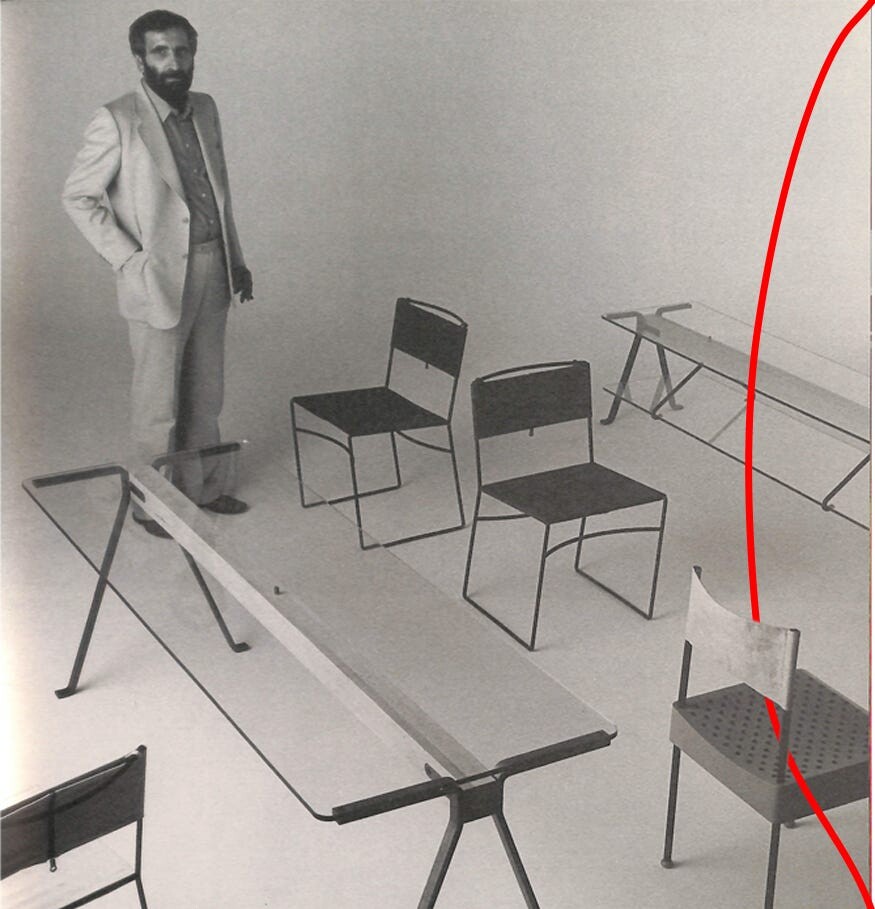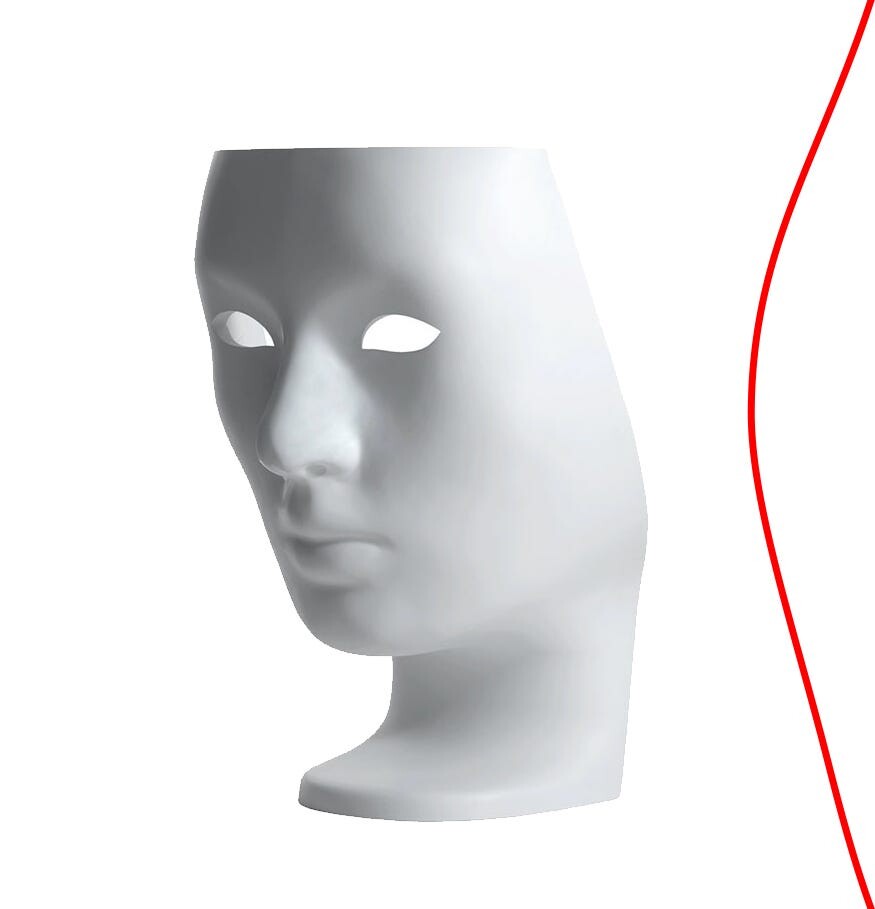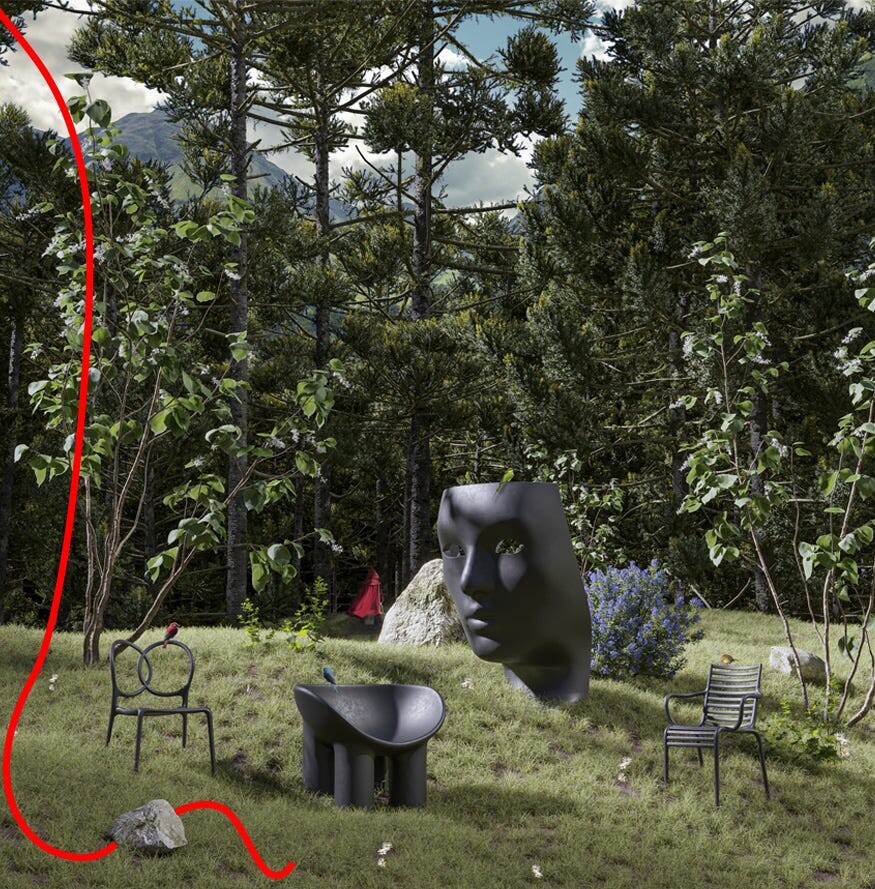Driade is an aesthetic laboratory in the continuous search for beauty in living.
The vast Driade catalog includes furniture for the home, garden and public spaces. They are objects of art and everyday use, souls that blend harmoniously.
This constitutes the uniqueness of the Driade proposal in the world of design.
The aesthetic laboratory was born from the desire to introduce experimentation in the serialization of the industrial product.
The search for creativity in each product constitutes the very meaning of the company.
Driade thus gives life to products with unique attributes: eclectic, extravagant but at the same time elegant, timeless and above all joyful.
In this alchemy of languages and sensations everyone finds a Dryad that resembles him.
The art of living is based on the concept that eclecticism, the mélange of cultures, curiosity and surprise represent the true essence of our age.
a predisposition to listening, a state of alertness, an attention to recording the signs coming from the outside and then translating them into daily creations.
This becoming permeable to differences makes the Driade project a highly topical proposal open to the future. He denies the flattening of globalization,
but senses its vitality and freshness deriving from the multiplication of places where ideas develop.
1968 Driade is born,
an Aesthetic
Laboratory always in progress
It was born in 1968 on the initiative of a founding group made up of Enrico Astori, a director who determines the product and communication policy by guiding the choices; Antonia Astori, designer and author of the architectural face of the company; Adelaide Acerbi, head of image and communication.
Driade immediately established itself for the quality of an original proposal and a highly innovative industrial policy, which compares three specific problems of the project: the conception of a program, its implementation, its communication
Producing designer furniture as individual author's objects according to the logic of collecting, this is how Driade develops as an author factory.


1973 The purity of
Enzo Mari's tables
With his usual lucidity, Enzo Mari decides to proceed with this collection of tables
- which includes Frate, Fratello and Cugino - with transparent glass tops.
Only in this way will it be possible to enhance the rough essentiality of the supports in metal profiles.
Designed in 1973, and continuously in production since then, these pieces are certainly among the happiest of the Milanese master.
1995 Driade
becomes a BOOK
Skira publishes DRIADEBOOK A quarter of a century in project with graphic design by Adelaide Acerbi, curated by Fulvio Irace.
Distributed in bookshops, museums and art galleries all over the world, the book tells of chronicles and stories of twenty-five years of design in Italy.
The industry, the debate, the authors of a season that changed the image of the industrial product, of domestic art, of interior architecture.


2010 Nemo by Fabio
Novembre is born
Fabio Novembre uses furniture design to tell stories.
Intense and engaging stories where the human figure is often the protagonist.
A figure capable of becoming abstract and universal, of proposing a mythologized beauty as happened with Greek art.
Thus was born Nemo, an armchair head with a classic appearance
which, like a mask, conceals and at the same time reveals its inhabitant.
2018 The 50th
Anniversary of Driade
Driade was born in 1968, from a family intuition of the brothers Astori, Enrico and Antonia and Adelaide Acerbi Astori.
The search for beauty and an exclusive and never banal character has contributed to the sudden affirmation of a design forge which is also the first capable of a glamorous and global image.
In 2018, after fifty years of creativity and lifestyle, the brand challenges itself with a lunar mission: Driade Moon Mission / 50 'Anniversary, a project by Gianluigi Ricuperati, from a visionary concept by Piergiorgio Robino of Studio Nucleo.
Since March 2018 Giuseppe Di Nuccio is the CEO of ItalianCreationGroup. Di Nuccio's entry into the group represents a new strategic phase of the luxury pole which, after the highly prestigious acquisitions - 3 brands in Altagamma - is redefining the logic of the sector.


2018 Faye Toogood enters
the Driade designer parterre with Roly Poly
The characteristic massive and reassuring lines of Faye Toogood's Roly Poly collection become even more captivating in her new collaboration with Driade.
The latest line of the Italian design house takes on the rounded and welcoming shapes of its limited edition collection, Assemblage No 4. The low seat has been raised with padded cushions that sit in its curved bowl shape; the collection also features a new sofa that further explores the aesthetics of Roly Poly, highlighting the interplay between the graceful arch of the spoon seat and the four stout, solid legs that support it.
2021 BLACK IS THE NEW GREEN, the first 100% recycled capsule collection by Driade
Driade inaugurates Black is the new Green, capsule collection composed of iconic chairs and armchairs such as Nemo by Fabio Novembre, Roly Poly by Faye Toogood, Pip-e by Philippe Starck and Sissi by Ludovica + Roberto Palomba, entirely made with recycled plastic material.
The material with which this collection is made comes from industrial recycling coming from internal production waste, and therefore controlled, and from post-consumer recycling.
All the seats made with this material are characterized by neutral colors - such as black in particular - which makes them homogeneous.
Driade, the brand that has made eclecticism its stylistic code, is committed to developing a path to support sustainability, investing in increasingly innovative production systems that guarantee the lowest environmental impact while maintaining excellence and putting personal health and comfort in the foreground.
Black is the new Green, marks for Driade the turning point towards a green, eco-sustainable approach aimed at improving the impact on the environment, a trend that has already begun with the use of materials and solutions that do not negatively affect the environment demonstrating that sustainability and sustainable development are not antithetical processes but that they can and must be complementary.
In this, sustainability is a global categorical imperative. eco-sustainable and aimed at improving the impact on the environment, a trend that has already begun with the use of materials and solutions that do not negatively affect the environment, demonstrating that sustainability and sustainable development are not antithetical processes but that can, and must be complementary.
In this, sustainability is a global categorical imperative. eco-sustainable and aimed at improving the impact on the environment, a trend that has already begun with the use of materials and solutions that do not negatively affect the environment, demonstrating that sustainability and sustainable development are not antithetical processes but that can, and must be complementary.
In this, sustainability is a global categorical imperative.


